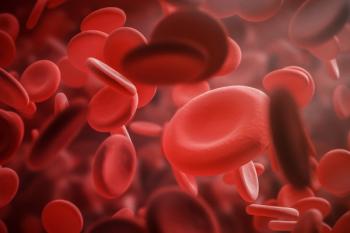
R.Ph.s can play pivotal role in management of stable angina
Chest pain is exceeded only by abdominal pain as the reason people visit their local emergency department. The American Heart Association (AHA) estimates that 6.8 million Americans have chronic stable angina (CSA). In 1999, the American College of Physicians (ACP) and the American College of Cardiology (ACC) and AHA developed joint guidelines on the management of patients with CSA. ACC/AHA updated these guidelines in 2002, and ACP recognized the document as a scientifically valid, high-quality review of the evidence and background paper.
Chest pain is exceeded only by abdominal pain as the reason people visit their local emergency department. The American Heart Association (AHA) estimates that 6.8 million Americans have chronic stable angina (CSA). In 1999, the American College of Physicians (ACP) and the American College of Cardiology (ACC) and AHA developed joint guidelines on the management of patients with CSA. ACC/AHA updated these guidelines in 2002, and ACP recognized the document as a scientifically valid, high-quality review of the evidence and background paper.
ACP recently published a summary of the 2002 ACC/AHA guidelines to highlight the recommendations most likely to be important to clinicians who practice in the primary care setting. This paper was published in the Oct. 5 issue of the Annals of Internal Medicine.
"For every person who has a myocardial infarction (MI), approximately 30 people in the community have CSA," said Stephan Fihn, M.D., M.P.H., chief of the division of general internal medicine and professor of medicine and health services at the University of Washington School of Medicine, Seattle. "The vast majority of these patients are being cared for by primary care physicians, not cardiologists, so ACP felt that it was important to disseminate this information to its members."
Fihn explained that recent data indicate ACE inhibitors can prolong the life of those with ischemic heart disease and relatively normal left ventricular function. So the updates to the 2002 guidelines emphasized the use of ACE inhibitors in those with CSA, he said.
Samy Ayoub, R.Ph., M.S., Pharm.D., assistant director for clinical services in the pharmacy department of Saint Barnabas Community Medical Center, Toms River, N.J., said pharmacists must be aware of study findings that suggest ACE inhibitors are beneficial and understand the mechanism of action of these drugs as well. This depth of knowledge makes pharmacists more effective at improving patient care, he said.
An understanding of how ACE inhibitors exert their effects also makes pharmacists more effective at convincing other healthcare professionals that such therapeutic measures are justified, said Ayoub. Pharmacists can alert physicians and nurses when components of the therapeutic regimen are missing or not considered standard of care, he said. "I think it is important that we are all on the same page about this issue. We may not be at 100% yet, but we are getting there," he said.
Those with CSA are often on several drugs in addition to ACE inhibitors, including statins, beta-blockers, and nitrates, Fihn said. He pointed out that these drugs have the potential for interaction. Patients may also have concomitant conditions, such as diabetes and heart failure, he said, adding that pharmacists can help patients manage a multidrug regimen and monitor them for drug-drug interactions.
Treatment for CSA can be very expensive for patients, Fihn continued. Pharmacists can tailor the drug regimen to be as cost-effective as possible, while making sure that it is also effective and tolerable, he said.
"Pharmacists are gatekeepers and partners in patient care," Ayoub concluded. They are the final step in getting medication to the patient, he said, and must be on top of things to be effective members of the clinical team.
Newsletter
Pharmacy practice is always changing. Stay ahead of the curve with the Drug Topics newsletter and get the latest drug information, industry trends, and patient care tips.





























































































































